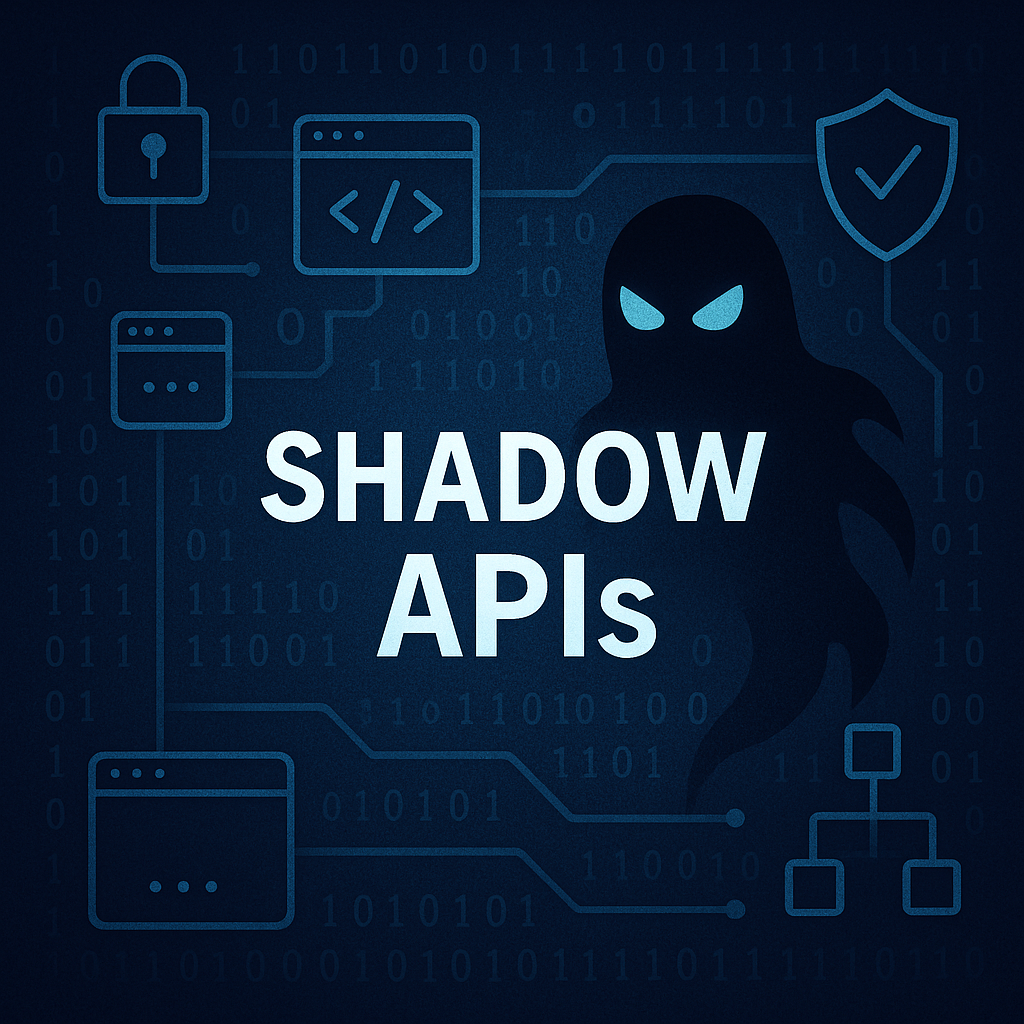
Exposing the Invisible: A Technical Deep Dive into Shadow APIs and Runtime Risk
Executive Summary
In agile environments driven by microservices, containers, and rapid release cycles, Shadow APIs—endpoints that are undocumented, unmonitored, or forgotten—represent a growing risk to organizations. These APIs often emerge outside centralized governance structures and remain invisible to conventional API security tools. This blog explores the mechanics of how Shadow APIs arise, why they evade traditional controls, and how runtime protection mechanisms like session-bound encryption and endpoint masking can neutralize the threat they pose.
1. What Are Shadow APIs?
Shadow APIs are application programming interfaces that exist without formal documentation or oversight. They typically result from:
- Legacy versions of applications not properly decommissioned.
- Internal microservices or test/debug endpoints accidentally exposed to the public.
- Misconfigurations in API gateways or reverse proxies that unintentionally expose internal routes.
Because they are not part of the official inventory, Shadow APIs are excluded from standard testing, documentation, and monitoring pipelines—leaving them vulnerable to enumeration and abuse.
2. Why Shadow APIs Bypass Traditional Defenses
a. API Gateways and WAFs Have Limited Visibility
API gateways route requests based on predefined configurations. Shadow APIs that are not registered in gateway policies remain unmonitored. Similarly, Web Application Firewalls (WAFs) typically rely on signatures and heuristics, which may not detect access to seemingly benign but undocumented endpoints.
b. Static Analysis Tools Can’t Catch Runtime Exposure
Traditional security tools, such as SAST and DAST, focus on the codebase and known interfaces. However, APIs generated dynamically at runtime—through templated routes or dynamic code execution—often go undetected.
c. CI/CD Pipelines Move Too Fast
In DevOps environments, services are spun up and deprecated rapidly. Without proper API governance or asset tracking, these changes introduce ephemeral endpoints that attackers can still discover and exploit.
3. The Real-World Risk of Shadow APIs
Attackers actively scan for undocumented APIs using automated tools such as:
ffuf,dirsearch, or custom fuzzers.- DNS enumeration and subdomain scanning.
- API contract inference via response pattern analysis.
Case Example:
In several past breaches, attackers accessed internal services via forgotten endpoints that bypassed authentication layers or exposed sensitive data through verbose error messages or default admin panels.
Once discovered, Shadow APIs become low-hanging fruit for:
- Business logic exploitation
- Authentication bypass
- Lateral movement within internal systems
4. Runtime Visibility: A Necessary Control Plane
Static security measures are insufficient. Organizations require runtime-aware defenses that operate at the point of execution, not just at the perimeter.
Key Techniques Include:
- Ephemeral Session Binding:
Secure APIs are only callable within a valid session. This blocks automated tools from scanning or invoking APIs outside session context. - Dynamic Payload and URL Encryption:
URLs, parameters, and payloads are encrypted on the client-side and decrypted only within the application context. Even if an endpoint is exposed, the attacker cannot craft a valid request without the encryption protocol. - Request Fingerprinting and Threat Scoring:
Behavioral analysis at runtime can detect anomalies—such as access to undocumented endpoints or requests without proper bootstrapped headers—and assign real-time risk scores.
Codesealer implements several of these controls. For example, its bootloader binds the session to a temporary set of encrypted APIs that rotate frequently, effectively invalidating reconnaissance attempts.
5. Securing the Unknown: Actionable Measures
To mitigate Shadow API risk, organizations should:
- Enforce Runtime Protection:
Adopt client-server binding mechanisms where APIs are only valid within signed, short-lived sessions. - Mask Endpoints and Obfuscate Payloads:
Prevent enumeration by encrypting API paths and payloads beyond TLS. - Perform Continuous Discovery:
Use active inventory tools that log all incoming requests—even on non-documented endpoints—to identify potential shadow exposure. - Integrate Deception or Tarpits:
Redirect probing behavior to sandboxed environments or deceptive services to slow attackers and gather intel.
Conclusion
Shadow APIs are not theoretical risks—they are active, exploitable vulnerabilities created by the speed and complexity of modern development. Traditional scanning and protection tools fall short because they operate outside the runtime context where these APIs live and are exploited. To defend effectively, organizations must adopt runtime-aware protections that can enforce encrypted communications, validate sessions dynamically, and detect access to undocumented services in real time.
